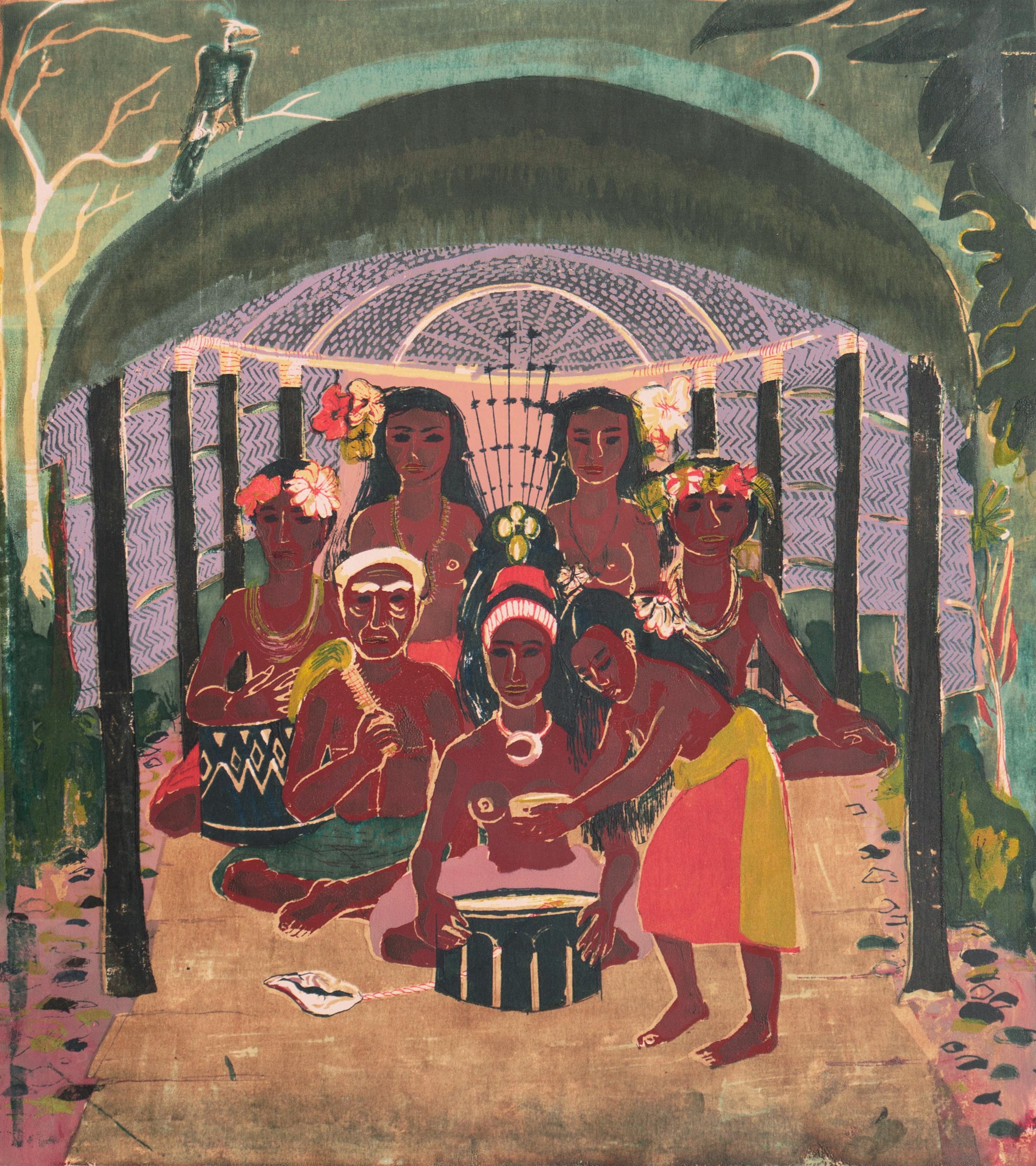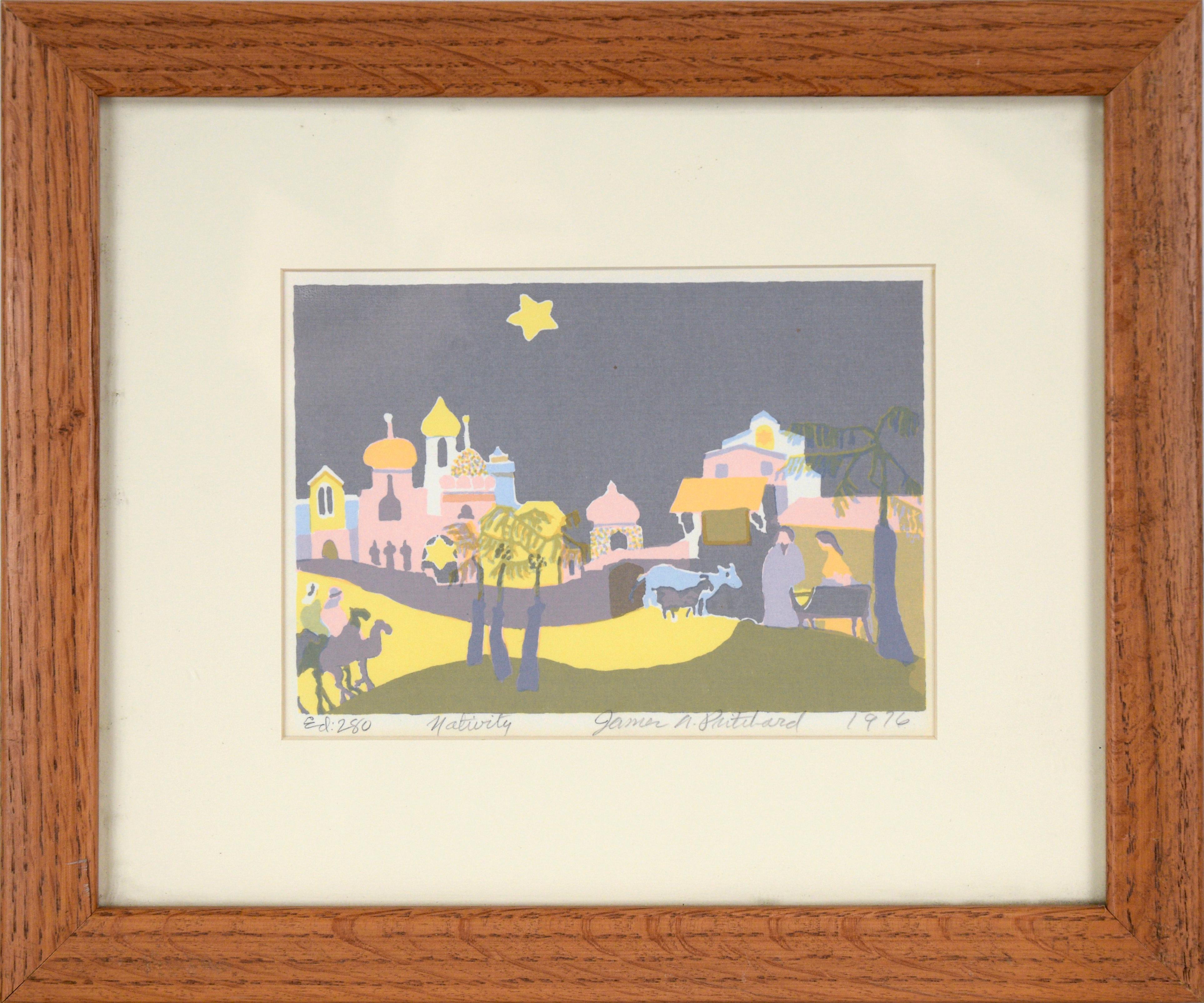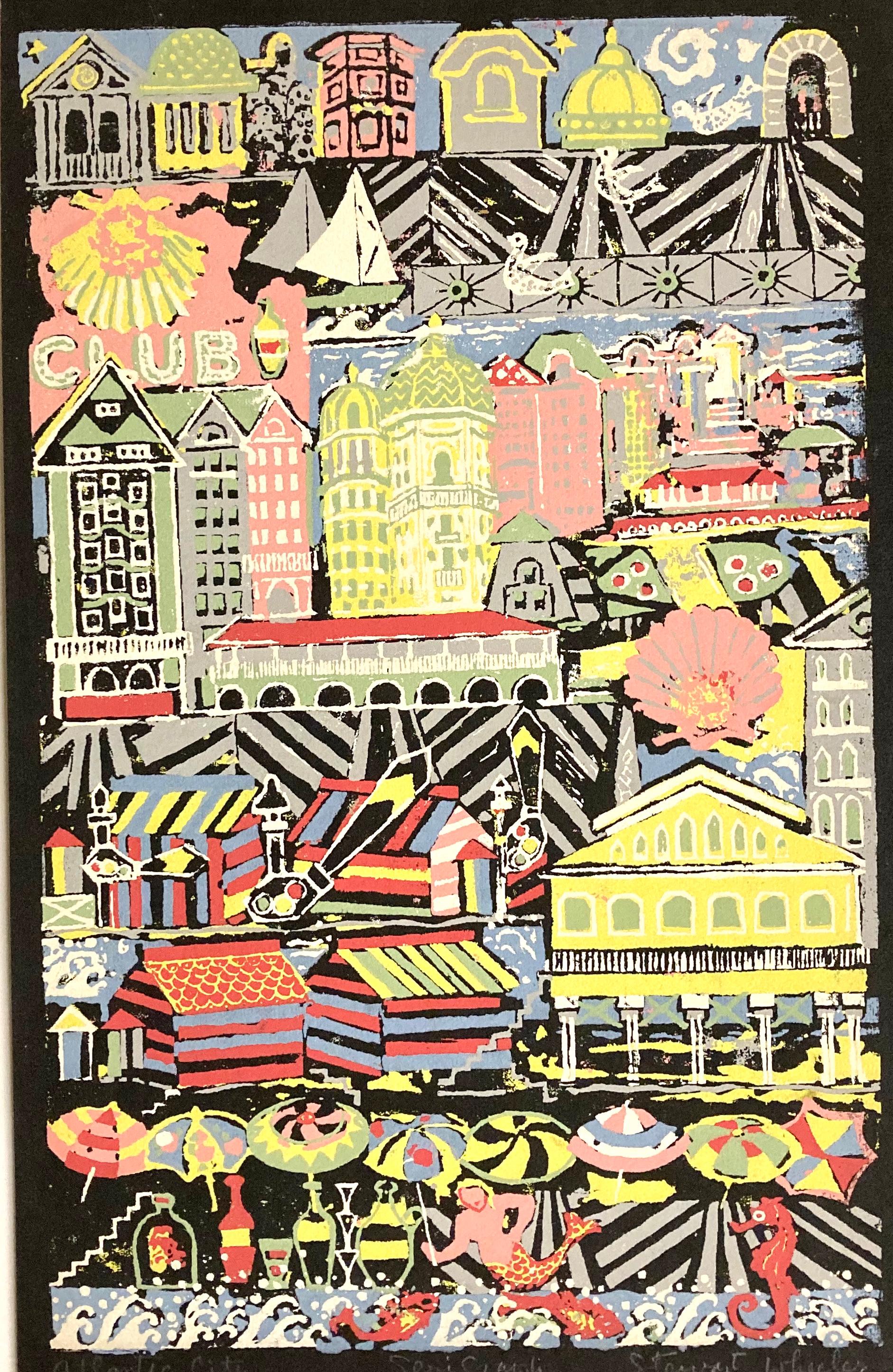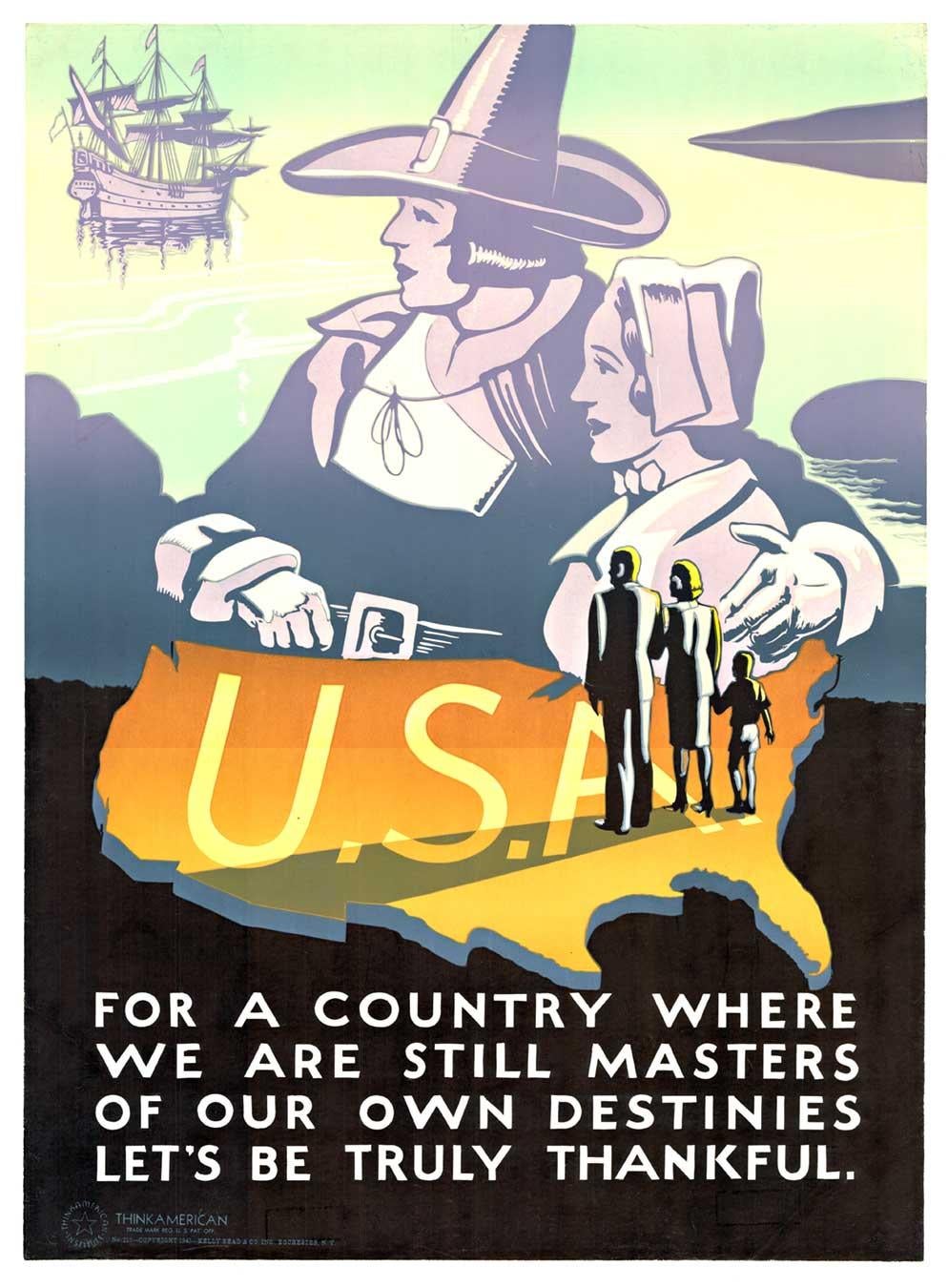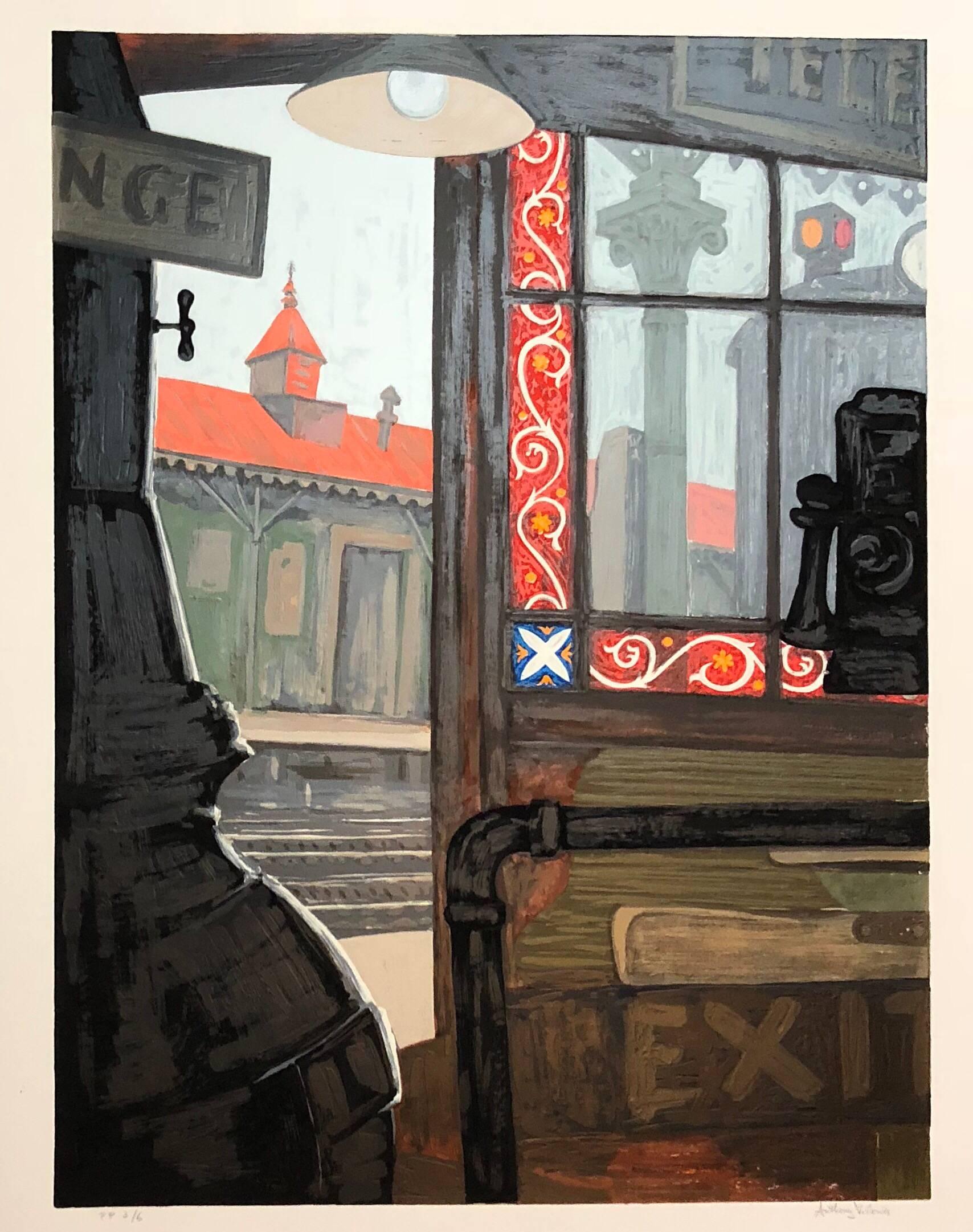Items Similar to Landscape - Screen Print by Luca Dall'Olio - 2000s
Want more images or videos?
Request additional images or videos from the seller
1 of 6
Luca Dall'OlioLandscape - Screen Print by Luca Dall'Olio - 2000s2000s
2000s
About the Item
Landscape is an artwork realized by Luca Dall'Olio.
Materic screen printing on canvas, cm 65x50, ex. IV/XXX.
Signature and edition
On the back: Stamperia d'Arte Artevalori stamp
Excellent condition.
Luca Dall'Olio is an Italian painter, photographer and sculptor whose work has been exhibited in Germany and the United States. Additionally, pieces by him have been featured in publications such as AD Architectural Digest.
Dall'Olio's art portrays dreamlike and enchanted landscapes. Drawing on iconographic and symbolic traditions, he also refers to history and contemporary life. His fantastic and signature pieces are created using mixed media with acrylics on canvas.
- Creator:Luca Dall'Olio
- Creation Year:2000s
- Dimensions:Height: 25.6 in (65 cm)Width: 19.69 in (50 cm)Depth: 0.04 in (1 mm)
- Medium:
- Movement & Style:
- Period:
- Framing:Framing Options Available
- Condition:Insurance may be requested by customers as additional service, contact us for more information.
- Gallery Location:Roma, IT
- Reference Number:
About the Seller
4.9
Platinum Seller
These expertly vetted sellers are 1stDibs' most experienced sellers and are rated highest by our customers.
1stDibs seller since 2017
6,721 sales on 1stDibs
Typical response time: 2 hours
- ShippingRetrieving quote...Ships From: Rome, Italy
- Return PolicyA return for this item may be initiated within 14 days of delivery.
More From This SellerView All
- Explosive Spring - Original Screen print by Maddalena Striglio-Late 20th centuryLocated in Roma, ITExplosive Spring is a very brightly colored screen print realized by the contemporary Italian artist Maddalena Striglio in the late 20th Century. Hand-signed in pencil on the lower...Category
Late 20th Century Modern Figurative Prints
MaterialsScreen
- My Retreat - Screen Print by Maddalena Striglio - Late 20th centuryLocated in Roma, ITMy Retreat is a very brightly colored screen print realized by the contemporary Italian artist Maddalena Striglio in the late 20th Century. Hand-s...Category
Late 20th Century Modern Landscape Prints
MaterialsScreen
- Meadow with Poppies - Screen Print by Maddalena Striglio - Late 20th centuryLocated in Roma, ITMeadow with Poppies is a very brightly colored screen print realized by the contemporary Italian artist Maddalena Striglio in the late 20th Century. Hand-signed in pencil on the lo...Category
Late 20th Century Modern Landscape Prints
MaterialsScreen
- Nocturnal Village - Original Screen Print by Lucie NavierBy Lucie NavierLocated in Roma, ITNocturnal Village is an original artwork realized by the French artist Lucie Navier (1910-1996) in the 1930s. Original black and white serigraph...Category
1930s Modern Landscape Prints
MaterialsScreen
- Navona Square - Screen Print by Carlo Mazzoni - Late 20th CenturyBy Carlo MazzoniLocated in Roma, ITNavona Square - Rome is an original serigraph realized by Carlo Mazzoni (1922). Hand-signed by the artist in pencil on the lower right corner. Numbered on the lower-left corner. Edi...Category
Late 20th Century Modern Figurative Prints
MaterialsScreen
- Rome - Colosseum interior - Screen Print by Costantino Persiani - 1972By Costantino PersianiLocated in Roma, ITRome - Colosseum interior is an original screen print on cardboard by Costantino Persiani in 1972. Hand-signed and dated on the lower right. Good conditions. Numbered, edition 127...Category
1970s Modern Landscape Prints
MaterialsScreen
You May Also Like
- 'Serving Poi', Hawaii, NYMoMA, Metropolitan Museum, National Gallery, SFAA, GGIEBy Marion Osborn CunninghamLocated in Santa Cruz, CAStamped, verso, with certification of authenticity for 'Marion Cunningham' (American, 1908-1948) and created in 1948. Paper dimensions: 17.75 x 16 inches A substantial and rare, mid-century silkscreen showing a Hawaiian family seated beneath a traditional tent of tapa cloth and being served poi by a young woman. To realize this complex work, Cunningham used as many as one dozen hand-drawn screens, each of which varied in pigment, hue and opacity. Created during the extraordinary creative ferment that characterized the last year of the artist's life, this work represents a remarkable achievement for both artist and medium. Born in Indiana, Marion Osborn Cunningham moved to California in 1911. She first studied art with the American Impressionist, Ruth Heil Emerson, before continuing her education at Santa Barbara City College and receiving her Bachelor of Arts from Stanford University. She subsequently furthered her studies at the California School of the Fine Arts and at the Art Students League in New York City, where she met and married the American abstract artist Ben Cunningham. Returning to San Francisco...Category
1940s Modern Landscape Prints
MaterialsScreen, Paper
- "Nativity" Modernist Landscape Screen Print in Ink on Paper -Located in Soquel, CA"Nativity" Modernist Landscape Screenprint in Ink on Paper Whimsical modern landscape silkscreen print of the nativity scene by San Francisco, C...Category
1970s Modern Figurative Prints
MaterialsPrinter's Ink, Screen, Paper
- Stewart Wheeler, Atlantic City (New Jersey)Located in New York, NYThe little that is know about the painter and printmaker Stewart Wheeler indicates that most of his career was spent in Philadelphia, Pennsylvania. And...Category
Mid-20th Century American Modern Landscape Prints
MaterialsScreen
- Original "Wagon Lits" pop art style serigraph travel by train posterBy Valerio AdamiLocated in Spokane, WAOriginal “Wagon Lits” serigraph poster by the artist Valerio Adami. It was printed in France by GrafiCaza (Michel Caza), one of the finest serigraph companies on woven paper—in exce...Category
1990s American Modern Figurative Prints
MaterialsScreen
- Original "Think American" USA World War II vintage posterLocated in Spokane, WAOriginal poster: For a Country Where We Are Still Masters of Our Own Destinies, Let's Be Truly Thankful. Silk-screened patriotism. This is a poster meant to appeal to the American f...Category
1940s American Modern Figurative Prints
MaterialsScreen
- Modernist Silkscreen Screenprint 'El Station, Interior' NYC Subway, WPA ArtistBy Anthony VelonisLocated in Surfside, FLscreenprint printed in color ink on wove paper. New York City subway station interior. Anthony Velonis (1911 – 1997) was an American painter and designer born in New York City who helped introduce the public to silkscreen printing in the early 20th century. While employed under the federal Works Progress Administration, WPA during the Great Depression, Velonis brought the use of silkscreen printing as a fine art form, referred to as the "serigraph," into the mainstream. By his own request, he was not publicly credited for coining the term. He experimented and mastered techniques to print on a wide variety of materials, such as glass, plastics, and metal, thereby expanding the field. In the mid to late 20th century, the silkscreen technique became popular among other artists such as Robert Rauschenberg and Andy Warhol. Velonis was born into a relatively poor background of a Greek immigrant family and grew up in the tenements of New York City. Early on, he took creative inspiration from figures in his life such as his grandfather, an immigrant from the mountains in Greece, who was "an ecclesiastical painter, on Byzantine style." Velonis attended James Monroe High School in The Bronx, where he took on minor artistic roles such as the illustration of his high school yearbook. He eventually received a scholarship to the NYU College of Fine Arts, into which he was both surprised and ecstatic to have been admitted. Around this time he took to painting, watercolor, and sculpture, as well as various other art forms, hoping to find a niche that fit. He attended NYU until 1929, when the Great Depression started in the United States after the stock market crash. Around the year 1932, Velonis became interested in silk screen, together with fellow artist Fritz Brosius, and decided to investigate the practice. Working in his brother's sign shop, Velonis was able to master the silkscreen process. He reminisced in an interview three decades later that doing so was "plenty of fun," and that a lot of technology can be discovered through hard work, more so if it is worked on "little by little." Velonis was hired by Mayor LaGuardia in 1934 to promote the work of New York's city government via posters publicizing city projects. One such project required him to go on a commercial fishing trip to locations including New Bedford and Nantucket for a fortnight, where he primarily took photographs and notes, and made sketches. Afterward, for a period of roughly six months, he was occupied with creating paintings from these records. During this trip, Velonis developed true respect and affinity for the fishermen with whom he traveled, "the relatively uneducated person," in his words. Following this, Velonis began work with the Public Works of Art Project (PWAP), an offshoot of the Civil Works Administration (CWA), where he was assigned to serve the different city departments of New York. After the formation of the federal Works Progress Administration, which hired artists and sponsored projects in the arts, he also worked in theater. Velonis began working for the federal WPA in 1935. He kept this position until 1936 or 1938, at which point he began working in the graphic art division of the Federal Art Project, which he ultimately led. Under various elements of the WPA program, many young artists, writers and actors gained employment that helped them survive during the Depression, as well as contributing works that created an artistic legacy for the country. When interviewed in December 1994 by the Library of Congress about his time in the WPA, Velonis reflected that he had greatly enjoyed that period, saying that he liked the "excitement" and "meeting all the other artists with different points of view." He also said in a later interview that "the contact and the dialogue with all those artists and the work that took place was just invaluable." Among the young artists he hired was Edmond Casarella, who later developed an innovative technique using layered cardboard for woodcuts. Velonis introduced silkscreen printing to the Poster Division of the WPA. As he recalled in a 1965 interview: "I suggested that the Poster division would be a lot more productive and useful if they had an auxiliary screen printing project that worked along with them. And apparently this was very favorably received..." As a member of the Federal Art Project, a subdivision of the WPA, Velonis later approached the Public Use of Arts Committee (PUAC) for help in "propagandizing for art in the parks, in the subways, et cetera." Since the Federal Art Project could not be "self-promoting," an outside organization was required to advertise their art more extensively. During his employment with the Federal Art Project, Velonis created nine silkscreen posters for the federal government. Around 1937-1939 Velonis wrote a pamphlet titled "Technical Problems of the Artist: Technique of the Silkscreen Process," which was distributed to art centers run by the WPA around the country. It was considered very influential in encouraging artists to try this relatively inexpensive technique and stimulated printmaking across the country. In 1939, Velonis founded the Creative Printmakers Group, along with three others, including Hyman Warsager. They printed both their own works and those of other artists in their facility. This was considered the most important silkscreen shop of the period. The next year, Velonis founded the National Serigraph Society. It started out with relatively small commercial projects, such as "rather fancy" Christmas cards that were sold to many of the upscale Fifth Avenue shops...Category
1980s American Modern Figurative Prints
MaterialsScreen
Recently Viewed
View AllMore Ways To Browse
Veta Gorner On Sale
Victor Kagan
Vintage Dave Allen
Vintage Delaval
Vintage Heinz Beans
Vintage Hole Punch Tool
Visa Lounge
Vortex Of Doom
Waldemar Swierzy On Sale
Warner Kreuter
Whitford Carter
William Behnken
Woman Feminist Art By Paula Rego
Woman Holding Veil Dali
Yvonne Cole Meo
After Klimt Two Crouching Female Nudes
Al Hirschfeld Big Band
Alejandro Magallanes On Sale
